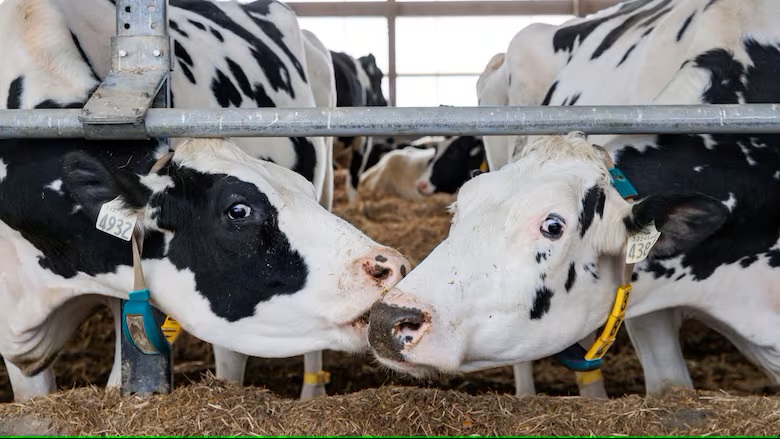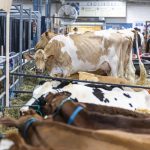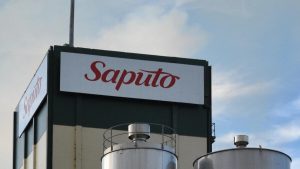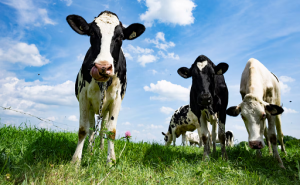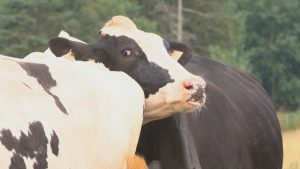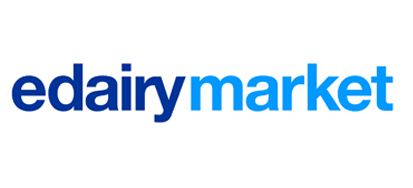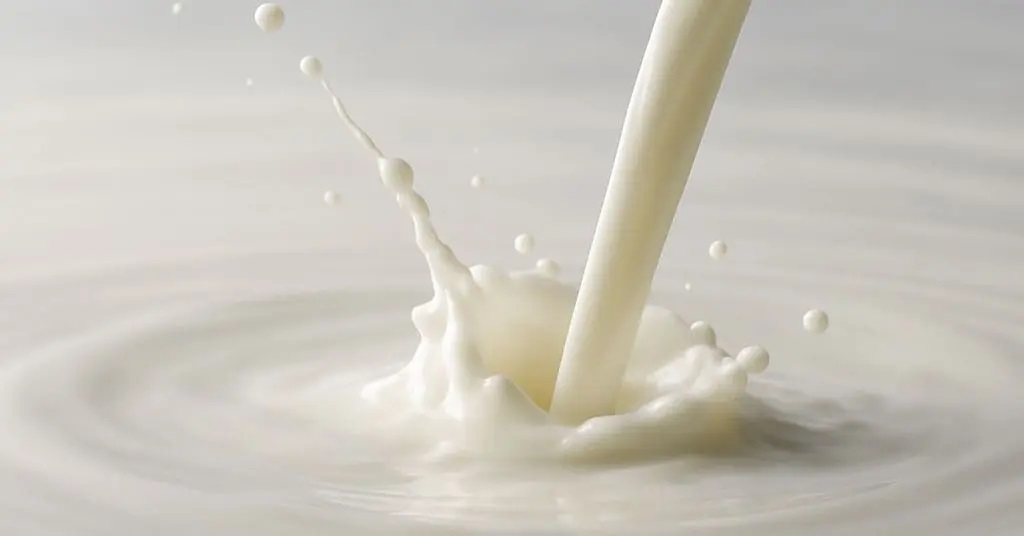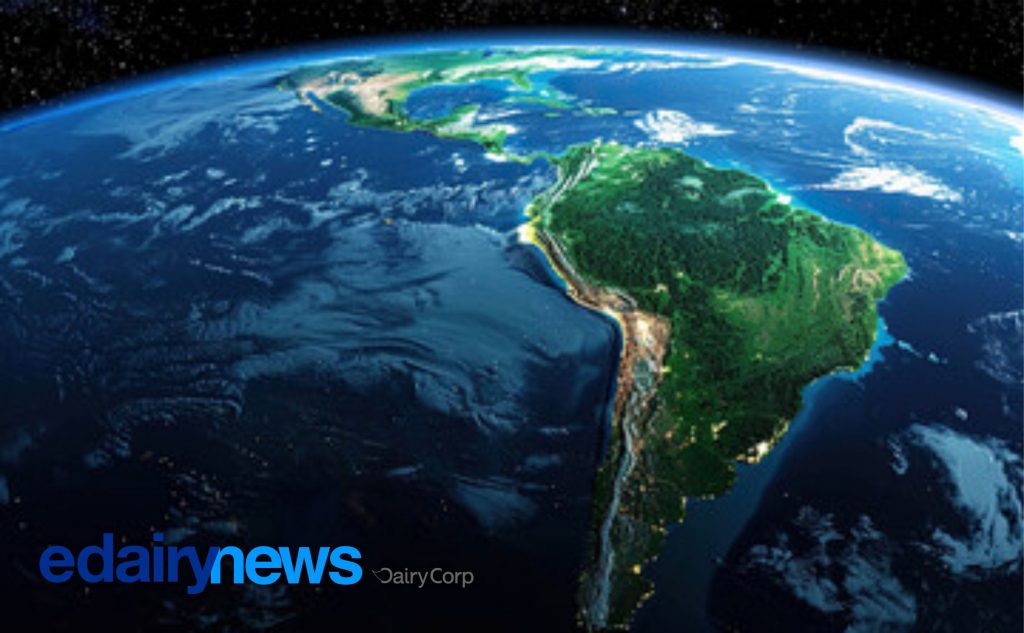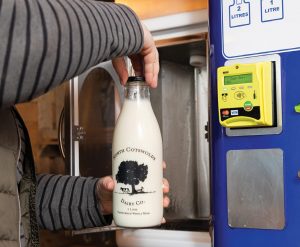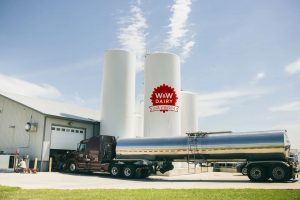
US President Donald Trump is once again taking aim at Canada’s agricultural supply management system, a previous source of malcontent during the negotiation of NAFTA’s successor, the Canada-US-Mexico Agreement (CUSMA), in 2018.
Under supply management, certain Canadian commodity sectors—namely dairy, poultry and eggs—limit production and imports, and guarantee minimum prices to ensure stability for producers.
On April 1, 2025, the Office of the US Trade Representative released the National Trade Estimate Report, an annual list of foreign trade barriers faced by US exporters. Agricultural supply management is listed in the report as one of the barriers to trade imposed by Canada. According to the report, “Canada’s supply-management system severely limits the ability of US producers to increase exports to Canada above tariff-rate quota (TRQ) levels and increases the prices that Canadians pay for dairy and poultry products.”
On April 2, 2025, President Trump unveiled his new “reciprocal tariffs” on imports from various countries around the world. However, Canada was not included among these countries. Instead, only the previously announced tariff measures will apply, for now. However, in the April 2 announcement, President Trump also claimed that Canada imposes a 250% to 300% tariff on US dairy products. In reality, these high tariffs only take effect if the US exceeds its TRQ, which has never occurred.
While Canada was largely spared in Trump’s most recent tariff announcement, the US administration continues to take aim at Canada’s supply management system, particularly in the dairy sector. The subject of supply management has been a frequent source of conflict between the US and Canada; however, Prime Minister Mark Carney has stated that supply management is “off the table” in upcoming trade and security talks between the two countries, which are scheduled to take place after the federal election on April 28, 2025.
How does Canada’s supply management system work?
Supply management was introduced in Canada in the 1960s in response to overproduction caused by technological advances, which resulted in low and unstable prices in the poultry, egg and dairy industries. The three pillars of supply management are production control, pricing mechanisms and import control.
- Production control: Production quotas are set for each province in order to prevent surpluses or shortages that may cause price fluctuations. Provincial boards then allocate production among farmers, who may only produce up to their allotted quota. The boards also negotiate prices for supply-managed products with buyers.
- Pricing mechanisms: Supply-management guarantees farmers a minimum price for their products. Provincial marketing boards negotiate minimum farm-gate prices with processors on behalf of producers.
- Import control (i.e., tariffs): Canada restricts imports of supply-managed products by setting TRQs, which limit the amount of imports of supply-managed products. TRQs impose high tariffs on imports in excess of the established quota to prevent foreign products from flooding the Canadian market.1
While Canada’s supply management system stabilizes the industry by controlling supply, the US dairy market operates without any supply restrictions, but is subsidized by the government in other ways to regulate prices.
Tensions between Canada and the US over Canadian dairy imports
Since 2021, the US has twice challenged Canada’s dairy import policies under CUSMA’s state-to-state dispute settlement mechanism.
In May 2021, the US requested the establishment of a dispute settlement panel regarding Canada’s allocation and administration of its dairy TRQs. The US alleged that Canada’s practice of creating processor pools violated certain articles under CUSMA. In January 2022, the panel concluded that Canada’s allocation of dairy TRQs violated article 3.A.2.11(b) of CUSMA, which provides that TRQs should not be allocated to producer groups. However, Canada celebrated a partial victory, claiming that the panel report expressly recognized the legitimacy of Canada’s supply management system. In May 2022, Canada published new CUSMA dairy TRQ allocation and administration policies, which ended the use of processor-specific pools, in response to the panel’s findings.
Unsatisfied with the changes made by Canada in response to the first panel report, the US requested the establishment of a second dispute settlement panel regarding Canada’s dairy TRQ allocation measures in January 2023. The panel’s final report, released in November 2023, found in Canada’s favour on all claims made by the US. In a joint statement following the release of the report, Canada’s ministers of international trade and agriculture and agri-food stated that the government would continue to preserve and defend Canada’s supply management system.
US tariffs and the future of supply management
It is likely that supply management will continue to be a major source of discontent between the two nations at anticipated trade talks following Canada’s federal election on April 28, 2025. Canada’s agricultural supply management system was included in the 2025 US National Trade Estimate Report as a barrier to trade, and President Trump is continuously raising the issue of high tariffs on dairy imports as unfair to the US.
In the face of ongoing US discontent regarding Canada’s supply management system, particularly in the dairy sector, Canada continues to stalwartly defend supply management, stating that the subject is off the table in any upcoming trade talks with the US. In addition, it appears that thus far, the dispute settlement mechanisms under CUSMA have upheld supply management as consistent with the free trade agreement.
For more information on this topic, please reach out to the authors, Morgan Camley and Kathryn Gullason, or a member of Dentons’ Litigation and Dispute Resolution or Regulatory group, who have expertise in the agricultural and agri-food sector.
Visit our Navigating today’s shifting tariff and trade environment hub for additional resources.
- Khamla Heminthavong, Canada’s Supply Management System (Ottawa: Library of Parliament, 2018) at 2-5.↩
You can now read the most important #news on #eDairyNews #Whatsapp channels!!!
🇺🇸 eDairy News INGLÊS: https://whatsapp.com/channel/0029VaKsjzGDTkJyIN6hcP1K
